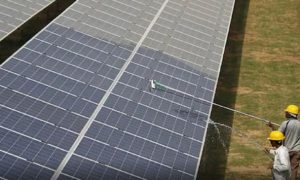With pre-budget consultations for Budget 2022-23 taking off, real estate experts say that the upcoming budget is expected to focus on providing a push to both affordable and rental housing as well as strengthen the existing financing systems to provide liquidity to stuck real estate projects.
Earlier this month, the government extended the deadline to provide pucca houses to all families in rural India until 2024. The Cabinet decided that the flagship rural scheme, Pradhan Mantri Awas Yojana-Gramin will be provided Rs 2.17 lakh crore in additional Central and State funding to achieve its target of building 2.95 crore houses.
“The government’s commitment towards boosting affordable housing is expected to remain intact,” Ajay Sharma, managing director, valuation services (India) at Colliers told Moneycontrol.
Budget 2021 had extended the benefit of additional interest deduction on home loans for first-time homebuyers in the affordable segment. Further, there was a time extension to claim the tax holiday on profits from affordable housing projects until March 2022.
The government is also expected to continue promoting the affordable rental housing schemes by providing tax exemption for notified rental housing projects. This will accelerate the pace of investments in this scheme and is likely to fall in line with achieving the overall objective of Housing for All,” he said.
It remains to be seen if the real estate sector’s long-standing demand to expand the definition of affordable housing so as to include homes priced more than Rs 45 lakhs in big metro cities is also expected to be addressed, he said.
As many as 114.06 lakh houses have been sanctioned, 89.36 lakh grounded (or foundation stone laid) and 52.55 lakh completed or delivered under the Pradhan Mantri Awas Yojana-Urban (PMAY-U), the government told the Rajya Sabha on November 29. Almost 3,131 Smart City projects worth Rs 53,175 crore have been completed under the Smart Cities Mission, it added.
According to the Ministry of Housing and Urban Affairs, under the PMAY-U, around 9.71 lakh houses have been completed and delivered to beneficiaries in Uttar Pradesh, 6.22 lakh in Gujarat, 5.26 lakh in Maharashtra and 4.77 lakh in Andhra Pradesh.
The actual implementation of the Pradhan Mantri Awas Yojna (PMAY) has fallen below the scheduled targets and would require a substantial push going forward, an ICRA analysis has said, pointing out that the performance is also likely to get impacted in FY2022 on account of COVID-19.
In terms of expenditure too, in aggregate, out of the required Rs 4.70 lakh crore, Rs 2.97 lakh crore has been incurred in the last five years but a whopping Rs 1.71 lakh crore (~37%) of the expenditure would be required to be incurred within the next 1.5 years to complete the construction of the balance units by 2022 to meet the near-term scaled down target, it noted.
Under the PMAY-U, against a revised target of 11.2 million units, almost entire 11.2 million housing units has been sanctioned and 4.8 million houses have been completed, leading to the completion of only 43% of the near-term target as well as the sanctioned units under the PMAY-U.
The scheme was launched in 2015, through which the government had set a target of constructing 50 million new housing units by 2022, of which 30 million units are proposed to be constructed in the rural areas (through PMAY-Rural) and 20 million in the urban areas (through PMAY-Urban).
Subsequently, the government has set a scaled down near-term target of 21.4 million under PMAY-R and 11.2 million units under PMAY-U by 2022. In terms of funding, the allocation towards the PMAY-U in the Union Budget has been reduced to Rs 8,000 crore for FY2022, against a revised estimate (RE) of Rs 21,000 crore for FY2021 and the same has remained stagnant when compared to the budget estimate (BE) of Rs 8,000 for FY2021.
Although the Cabinet had approved a Rs 60,000-crore dedicated affordable housing fund – the National Urban Housing Fund – in 2018 to support the PMAY programme implementation, a considerable portion of the same has already been utilised, raising the need for more allocation. In the absence of a substantial ramp-up in budgetary allocation, the execution could continue to lag, while the dependence on extra budgetary resources is likely to remain elevated.
Real estate developers say that the financing scheme for affordable housing should be extended to mid-segment as well.
“The RBI, through a notification in 2017, allowed a loan-to-value ratio (LTV) of up to 90% for home loans for affordable houses of Rs 30 lakh or less. Same facility should be permitted for other housing segments, including MIG and HIG. Benefits to a home buyer on taking a home loan in terms of tax benefits (Sections 24, 80C and 80EEA) need to be enhanced,” said Niranjan Hiranandani- National Vice Chairman – NAREDCO.
Prime Minister Narendra Modi’s objective of Housing for all envisages a role for Rental Housing stock to be created. To do so, ‘Notional Income’ from House Property held as stock in Trade – Section 23(5) – needs to be removed, so that ‘build to rent’ gets incentivized. Similarly, for the first 5 years from date of completion, rent should not be taxed, so that ‘buy to rent’ gets incentivized, he added.
Enhanced liquidity for stuck projects
Two waves of COVID-19 notwithstanding, and a probable third wave round the corner, liquidity crunch has had a cascading impact across sectors, including real estate. Project delays – the biggest fallout of the cash crunch – have severely dampened buyer sentiments in the last two years. Developers need a rational capital flow to keep up the supply pipeline, especially for ready-to-move-in homes which are in the highest demand, healthy. Increased supply also helps to keep property prices range bound.
Real estate experts say that in the present circumstances, when liquidity, especially for stuck projects is the need of the hour, the government may consider pumping in additional corpus into the existing SWAMIH Fund or route funds to such projects through the much-talked about bad loan bank model.
“The focus is likely to be on how NPAs in the real estate sector have to be dealt with, how will the NBFC books be treated once the bad loan bank comes about. The government may even consider enhancing the corpus set aside for the SWAMIH Fund. The bottomline will on how to ensure that there is enough liquidity for projects that are stuck,” said Sharma.
Special Window for Affordable and Mid-Income Housing Fund (SWAMIH) provides relief to homeowners. As many as 243 projects with investment of Rs 22,972 crore have been sanctioned and will benefit 1,41,045 homebuyers, the finance ministry had said in December 2021.
In November 2019, the central government launched the SWAMIH Investment Fund to help complete over 1,500 stalled housing projects, including those that have been declared non-performing assets (NPAs) or had been admitted for insolvency proceedings. The move was to help 4.58 lakh housing units across the country. Only RERA-registered projects with a positive net worth are to be provided funding.
To tackle the growing problem of mounting bad debts in the banking sector, Union Finance Minister Nirmala Sitharaman recently announced the creation of Bad Bank. This will be tasked with acquiring bad debts from several banks worth ₹two lakh crore.
Finance Minister Nirmala Sitharaman is expected to present the fourth budget of the Modi 2.0 government on February 1, 2022.
What needs to be done – A Wishlist
The expectation from Budget 2022-23 is that it should address critical issues, including demand generation, job creation and ensuring that the economy is on a sustained growth path; as also provide required support to real estate and construction. To achieve this, the suggestions would primarily be: reduction in compliance issues, provide tax certainty and measures to reduce litigation, said Hiranandani.
Further suggestions would be about making necessary changes in the structure and rates so that India has a proper set of both, direct and indirect taxes; as also exemptions which support economic growth and measures which result in higher disposable income in the hands of the common man.
Individual tax should be reduced from 42 per cent to 25 per cent.
The ban imposed on subvention schemes should be removed. The ban does not favour home buyers, a large segment of these do not have the capacity to pay both, EMIs on their under construction home loans as well as house rent.
Long term Capital gain from sale of House property should be taxed at 10 per cent (provision similar to section 112 for equity shares). Also, period of holding of house property should be reduced to 12 months from existing 24/36 months to qualify the same as Long Term Capital Asset, he added.





































